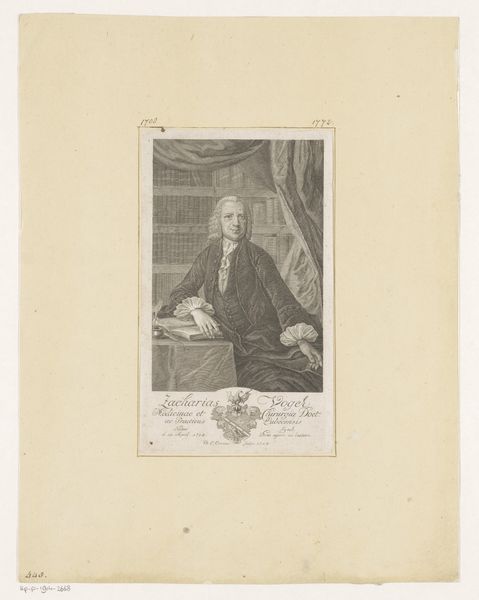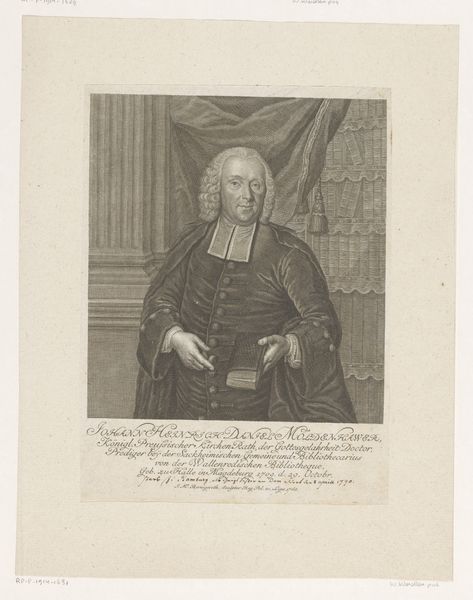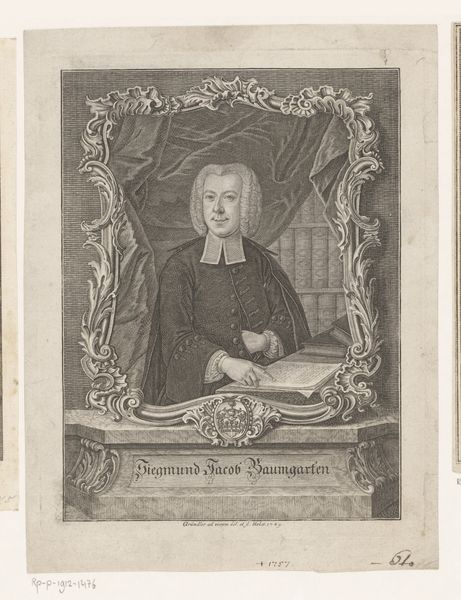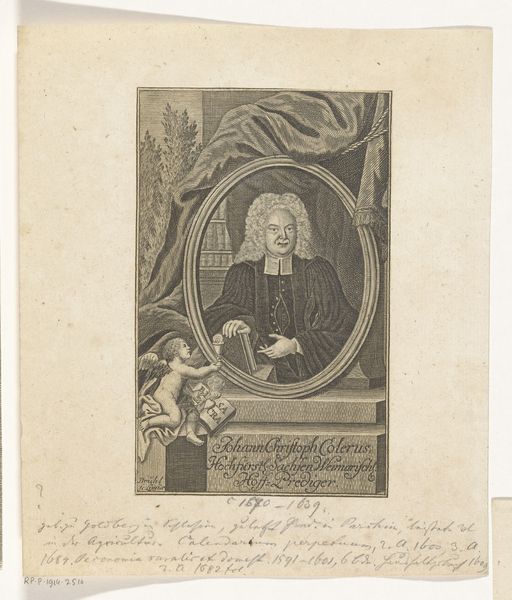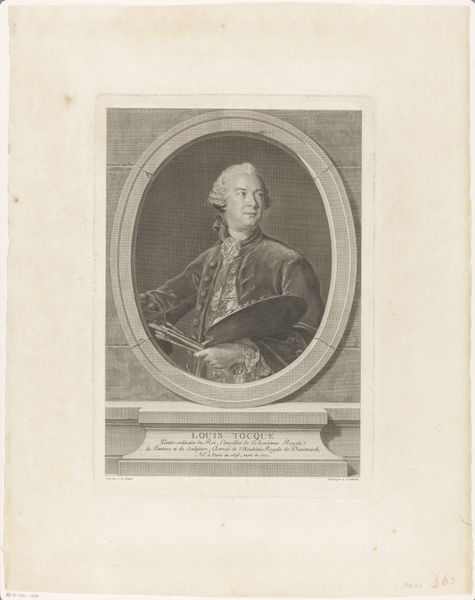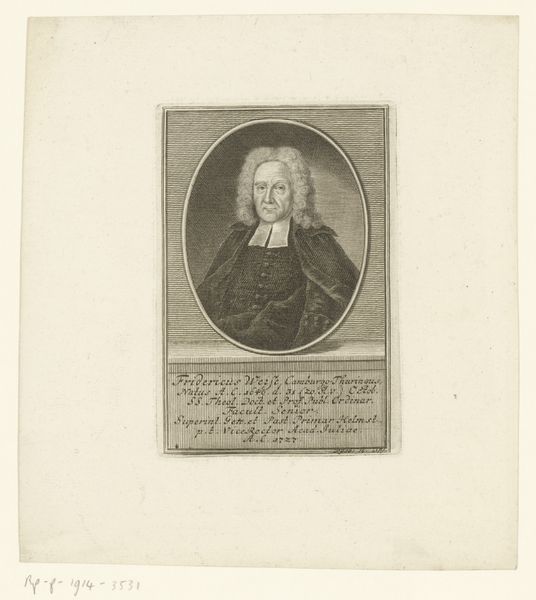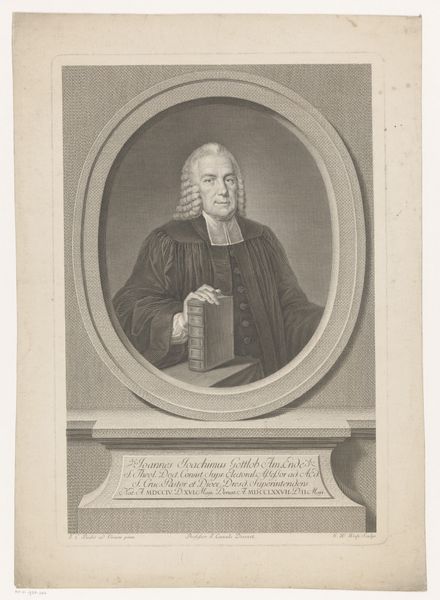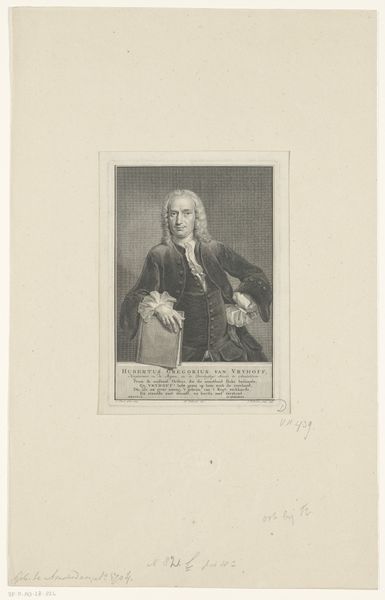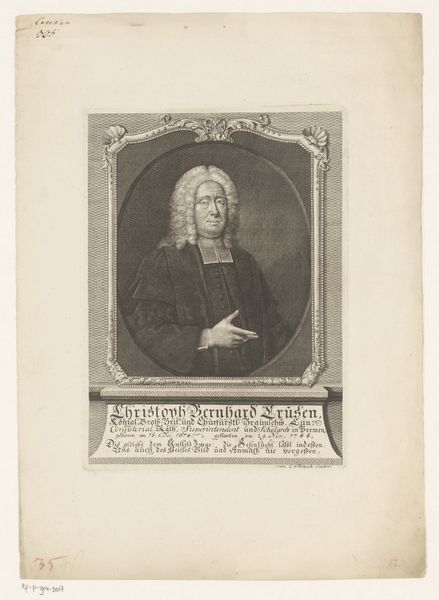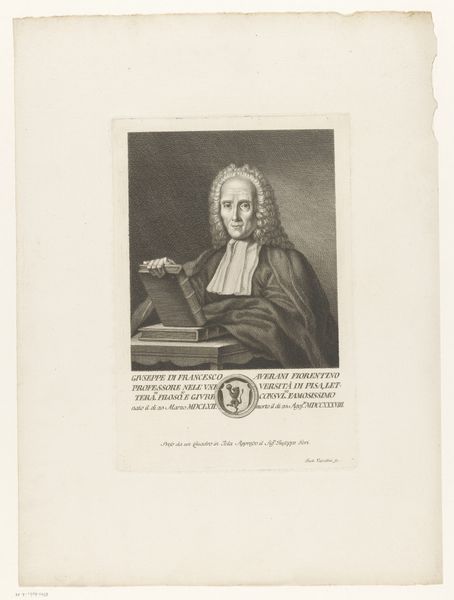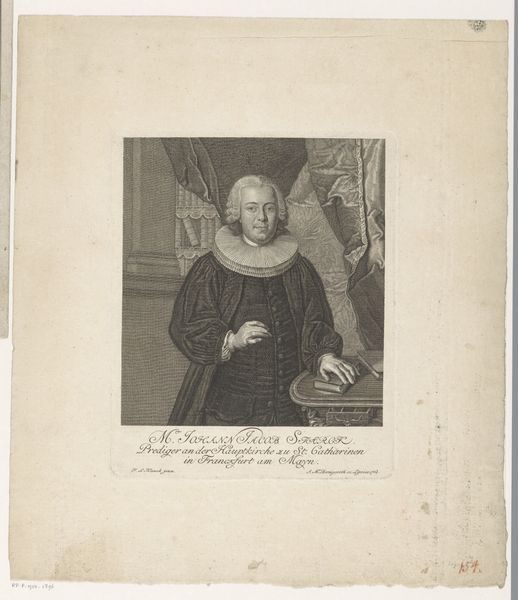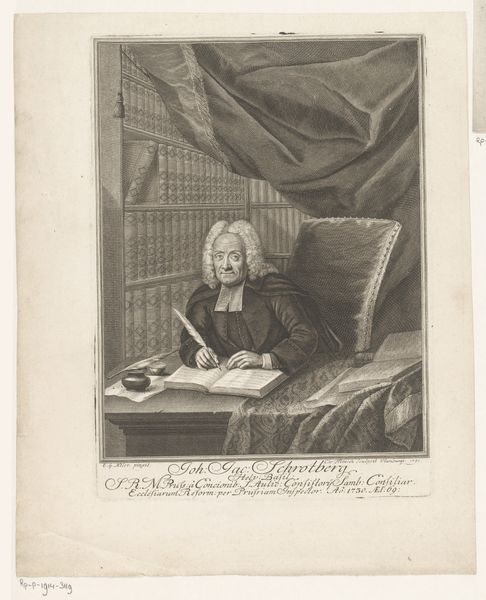
print, engraving
#
baroque
# print
#
old engraving style
#
retro 'vintage design
#
genre-painting
#
engraving
Dimensions: height 230 mm, width 184 mm
Copyright: Rijks Museum: Open Domain
Editor: This is a print called "Portret van Gottfried Schütze," made in 1751 by Christian Fritzsch. It's currently at the Rijksmuseum. It’s a striking portrait. How do you read this image, with its period-specific conventions? Curator: I see more than just a historical portrait; it’s a document reflecting power structures and intellectual identity of the time. Look at the composition—the subject, likely a man of significant social standing, is framed by symbols of knowledge and authority: books, academic regalia, elaborate decorative borders. How do you think the artist's choices reflect the intersection of class, education, and religious power during the Baroque period? Editor: I hadn't really considered those elements as communicating power directly, more as symbols of status. Do you think the fact that it is a print changes the way we should understand that power? Curator: Absolutely! Printmaking made images like this more accessible, circulating ideas and solidifying certain social hierarchies. How might the proliferation of such images affect the construction of identity and authority for both the subject and the viewer in 18th-century society? Think about the role of portraits and the performance of identity. Editor: That makes a lot of sense. So it's not just about who he *was* but about how that image helped to *construct* and spread his authority. I’ll definitely look at these portraits with a new perspective. Curator: Exactly. Recognizing the embedded social and political dynamics makes art history relevant to understanding how power operates even today. What looks like a simple portrait, can reveal so much about society’s values and biases, if you dig deeper.
Comments
No comments
Be the first to comment and join the conversation on the ultimate creative platform.
